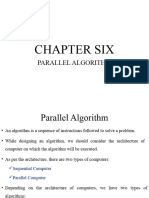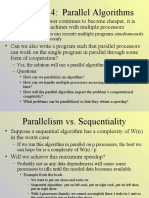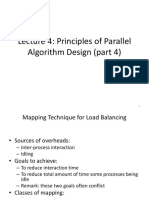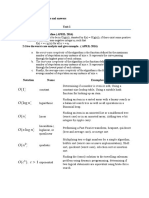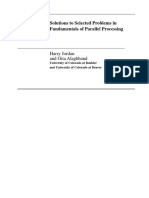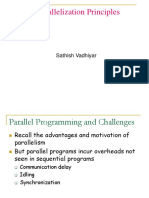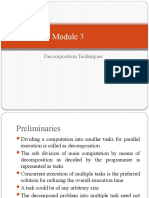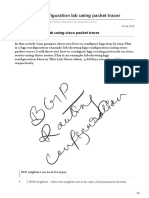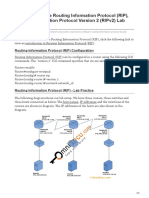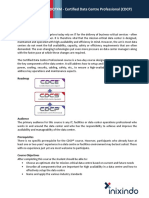0% found this document useful (0 votes)
157 views7 pagesAlgorithms For Parallel Machines
This document discusses algorithms for solving problems in parallel. It begins by asking questions about differences between parallel and sequential programming and achievability of superlinear speedup. It then discusses speedup and complexity measures and gives examples of histogram computation and parallel reduction. It describes adaptive quadrature and self-scheduling algorithms for numerically solving integrals in parallel. It concludes with an overview of matrix multiplication.
Uploaded by
shinde_jayesh2005Copyright
© © All Rights Reserved
We take content rights seriously. If you suspect this is your content, claim it here.
Available Formats
Download as DOC, PDF, TXT or read online on Scribd
0% found this document useful (0 votes)
157 views7 pagesAlgorithms For Parallel Machines
This document discusses algorithms for solving problems in parallel. It begins by asking questions about differences between parallel and sequential programming and achievability of superlinear speedup. It then discusses speedup and complexity measures and gives examples of histogram computation and parallel reduction. It describes adaptive quadrature and self-scheduling algorithms for numerically solving integrals in parallel. It concludes with an overview of matrix multiplication.
Uploaded by
shinde_jayesh2005Copyright
© © All Rights Reserved
We take content rights seriously. If you suspect this is your content, claim it here.
Available Formats
Download as DOC, PDF, TXT or read online on Scribd
/ 7







